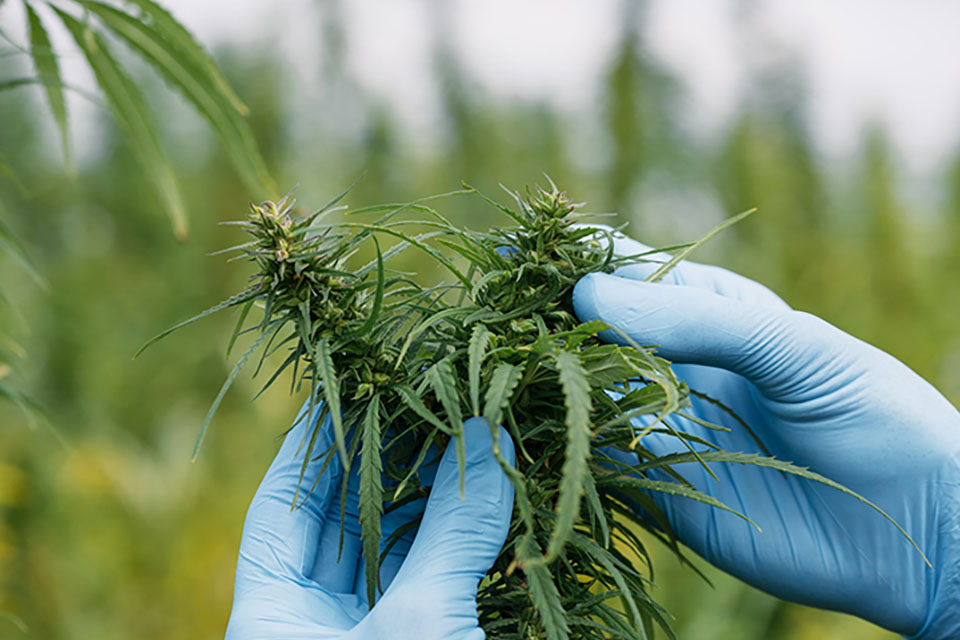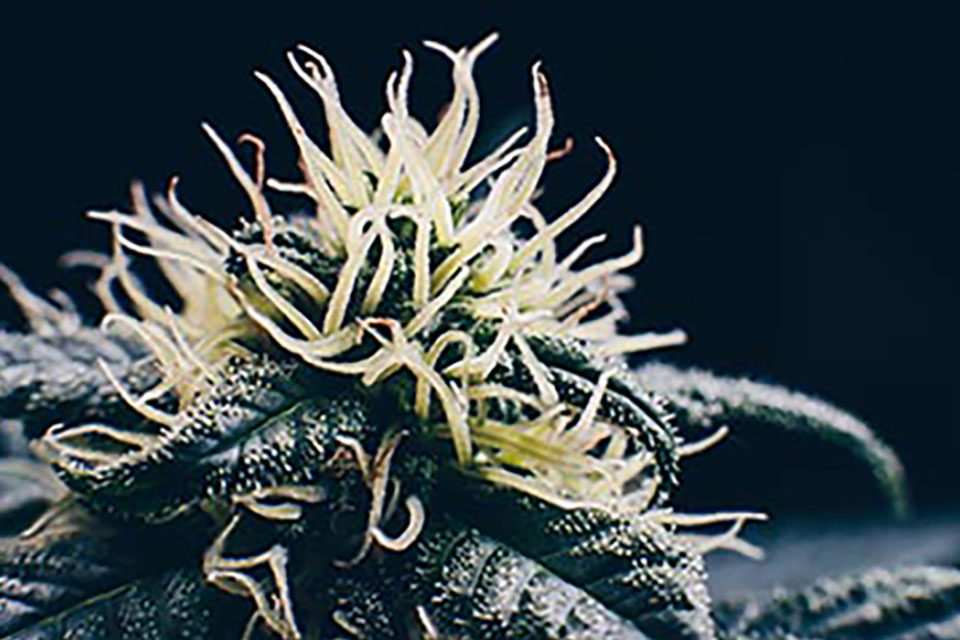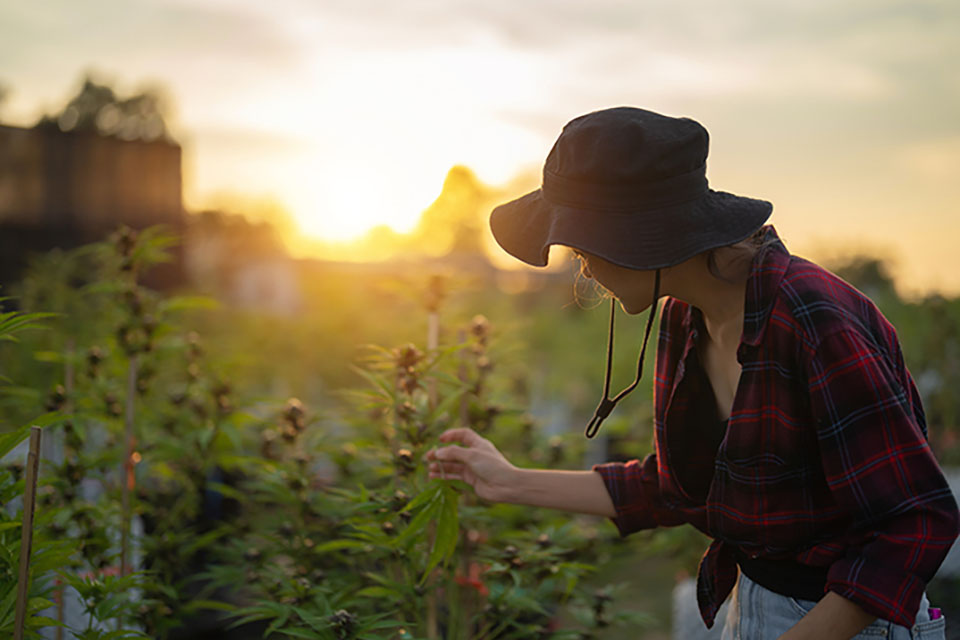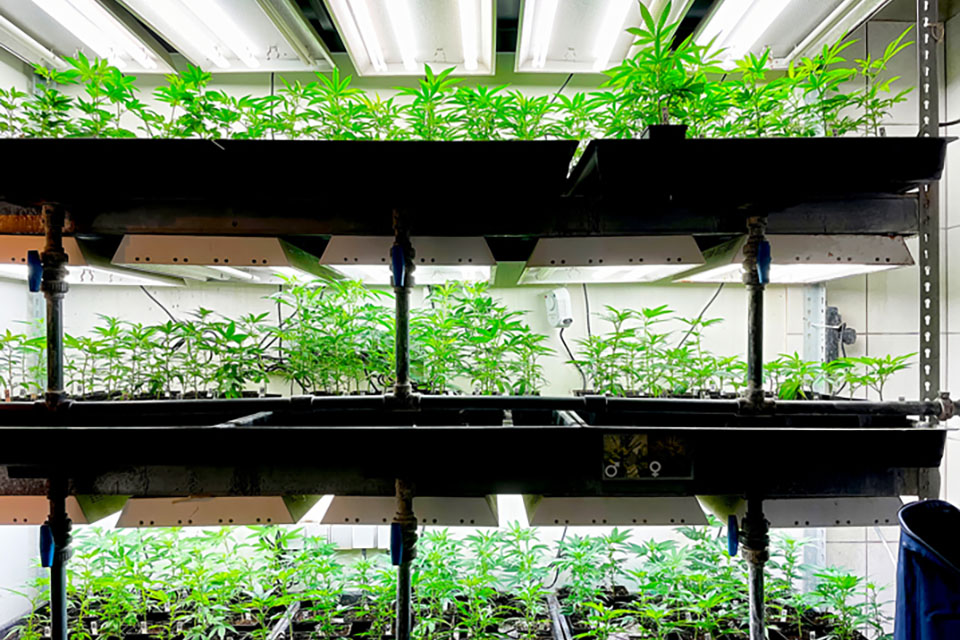
When growing cannabis, it is crucial to be able to identify whether your female plants have been pollinated. Understanding the signs of pollination can help you maximize the quality of your harvest and prevent unwanted seeds from developing.
Signs of Pollination in Female Cannabis Plants
The variations of physical changes in your female cannabis plants post-pollination are fairly significant. You should be able to detect them without much difficulty.
Visible Changes in Flowers
Before pollination, cannabis flowers display an open, vibrant, and expansive growth pattern. This is a sign of the plant’s readiness to receive pollen. Once pollinated, the flowers begin to close and focus their energy on seed production. The once expansive growth pattern turns into a compact and dense arrangement, signifying a shift in the plant’s priorities.
The coloration and overall appearance of the flowers can also change significantly post-pollination. The flowers may darken or appear greener, and they might also look swollen or plump when seeds start to form.
Examination of Pistils and Calyxes
Inspecting the pistils and calyxes can also provide vital clues about the state of pollination in your female cannabis plant.
- Calyxes: A clear sign of successful pollination is the presence of seeds developing within the calyxes. After pollination, the fertilized calyxes begin to swell as they start to produce seeds. Over time, these seeds mature and become more visible, especially when the calyx breaks open.
- Pistils: The pistils, which are the hair-like structures on the flowers, start to wilt and darken after pollination, indicating that the plant has shifted from being receptive to pollen to producing seeds.
Implications of Pollination
Pollination in your female cannabis plant affects the production of your plants and the quality of your harvest.
Effects on Flowering and Harvest
THC, or Tetrahydrocannabinol, is the primary psychoactive component in cannabis, which gives the ‘high’ effect. When a female plant gets pollinated, it diverts its resources towards seed production, leading to a reduction in the plant’s production of THC. This means that pollinated buds often contain significantly lower THC levels, resulting in a less potent product.
Another noticeable effect of pollination is a change in the flavor and aroma of the buds. As the plant shifts its energy to seed formation, it produces less terpenes, which are responsible for the plant’s scent and taste. As a result, pollinated buds may have a less flavorful and aromatic profile compared to unpollinated ones.
Impact on Seed Production
Pollination, while sometimes undesired by growers seeking high THC content and flavorful buds, plays a crucial role in the production of seeds.
The creation of seeds following pollination allows for new generations of cannabis plants to grow. This can be beneficial for breeders seeking to propagate specific strains or develop new ones. However, most home growers view the presence of seeds as a drawback since they reduce the overall usability of the buds and can alter the smoking experience. Moreover, seed production drains energy from the plant that could otherwise produce more potent, seedless “sinsemilla” buds.
Preventing Unwanted Pollination
While pollination plays a critical role in the life cycle of cannabis plants and the propagation of new strains, it can have adverse effects on the quality of your harvest if your main aim is high THC content, flavor, and aroma. As such, preventing unwanted pollination is crucial for many cannabis growers.
Isolating Female Plants
One of the most effective ways to prevent pollination is by isolating your female plants. This ensures protection from any male plants or hermaphrodites, which can pollinate and lead to seed formation.
There are various techniques for containing your female cannabis plants, from using separate rooms or tents to implementing outdoor measures like using wind barriers or growing at different times. The key is to avoid any potential contact with pollen from male plants or hermaphrodites.
Monitoring and Maintenance
Regularly inspecting your plants allows you to identify and remove any male plants or hermaphrodites early on. This prevents pollination and helps maintain the overall health of your grow by catching any potential issues such as pests or diseases early.
Preventing unwanted pollination may seem challenging, but with regular care and observation, it is possible to maintain the growth of potent, high-quality cannabis. Remember, the key is diligence and ensuring your female plants are protected from any potential sources of pollen.
Identifying Pollinated Female Plants Can Impact Harvest Quality
Understanding how to identify pollination can have a considerable impact on the quality of your harvest, particularly if you’re growing plants for a high THC content or robust flavor and aroma. While seed production may be beneficial for commercial growers, home growers seeking potent and flavorful buds generally see it as a drawback.
Dedicating time to understanding the signs and effects of pollination in female cannabis plants ensures the quality of your harvest, whether your aim is potent and flavorful buds, or you’re interested in breeding.



